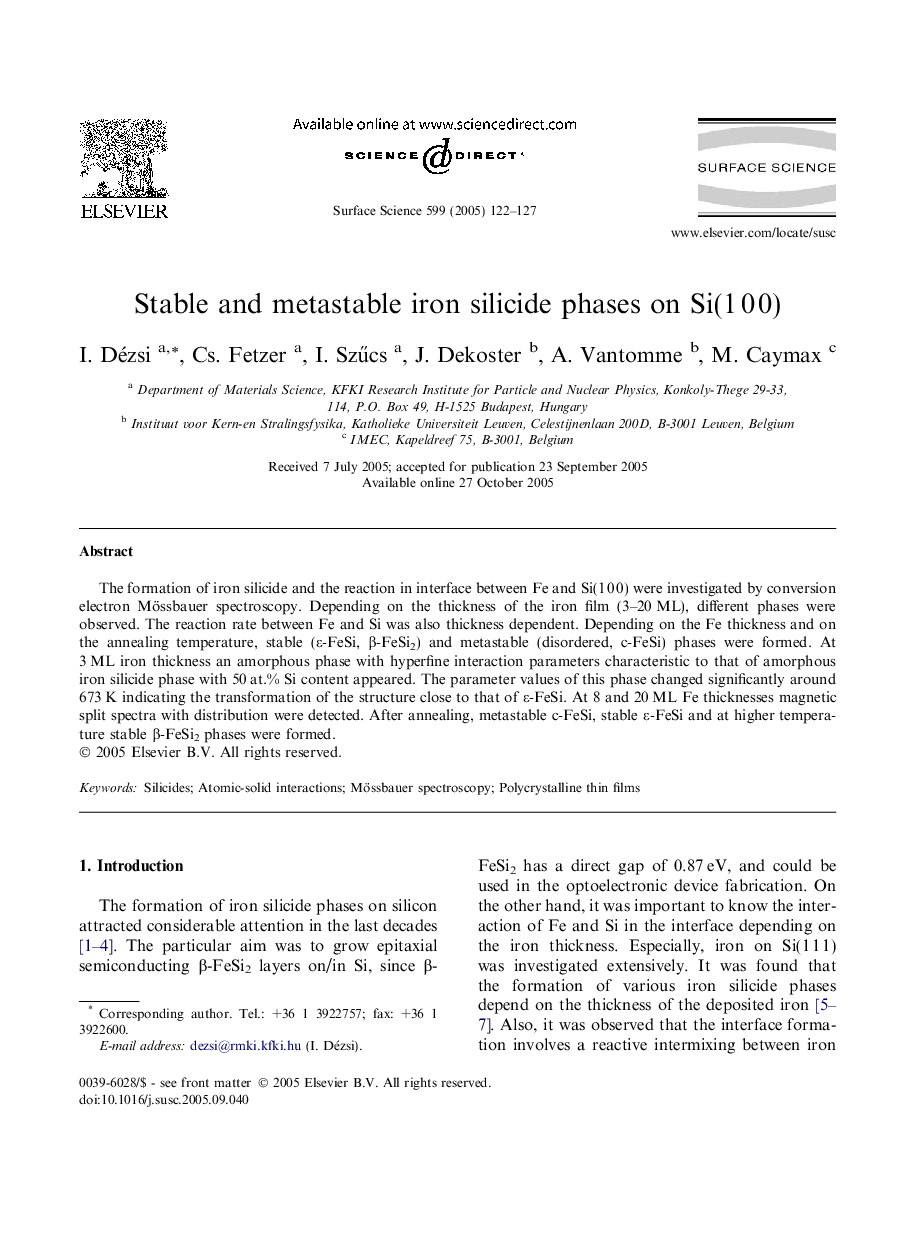| Article ID | Journal | Published Year | Pages | File Type |
|---|---|---|---|---|
| 9594898 | Surface Science | 2005 | 6 Pages |
Abstract
The formation of iron silicide and the reaction in interface between Fe and Si(1 0 0) were investigated by conversion electron Mössbauer spectroscopy. Depending on the thickness of the iron film (3-20 ML), different phases were observed. The reaction rate between Fe and Si was also thickness dependent. Depending on the Fe thickness and on the annealing temperature, stable (ε-FeSi, β-FeSi2) and metastable (disordered, c-FeSi) phases were formed. At 3 ML iron thickness an amorphous phase with hyperfine interaction parameters characteristic to that of amorphous iron silicide phase with 50 at.% Si content appeared. The parameter values of this phase changed significantly around 673 K indicating the transformation of the structure close to that of ε-FeSi. At 8 and 20 ML Fe thicknesses magnetic split spectra with distribution were detected. After annealing, metastable c-FeSi, stable ε-FeSi and at higher temperature stable β-FeSi2 phases were formed.
Related Topics
Physical Sciences and Engineering
Chemistry
Physical and Theoretical Chemistry
Authors
I. Dézsi, Cs. Fetzer, I. Szűcs, J. Dekoster, A. Vantomme, M. Caymax,
